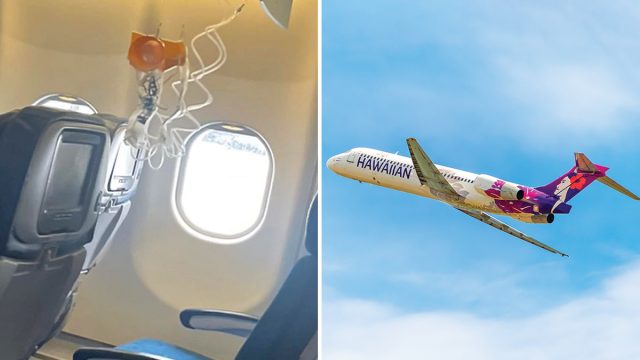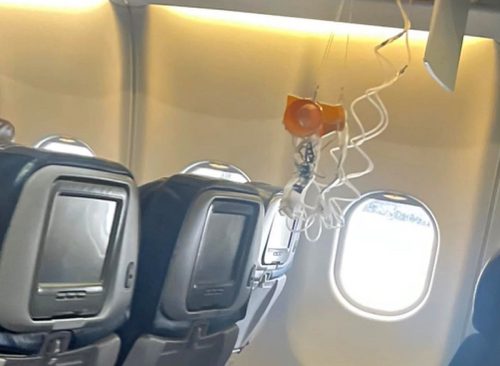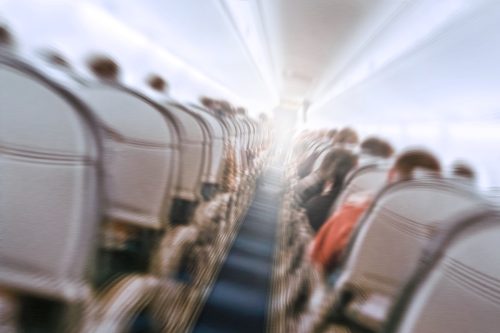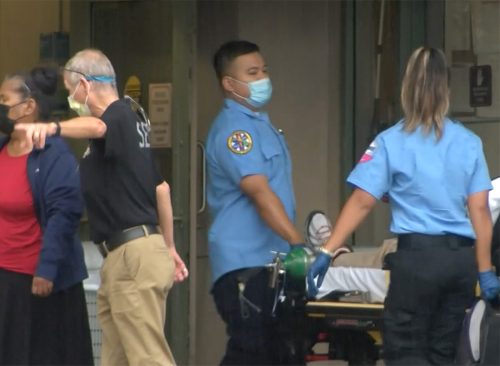Hawaiian Airlines Pilot Explains What Really Happened Just Before Turbulence Injured 25 People. Cloud “Shot Up.”
Here's why passengers crashed into the plane ceiling during the flight.

Last month, 25 people were injured—six of them seriously—when a Hawaiian Airlines flight unexpectedly encountered turbulence, shaking the cabin so violently that some passengers crashed into the ceiling and the floor. Some flyers thought the plane was crashing. Some later described it as the most severe turbulence they’d encountered on a flight. This week, the pilot of the flight described the strange things that happened in the sky just seconds before the plane was wracked by turbulence.
And if you haven’t seen this happen on an airline flight, you’re not alone. Read on to find out what happened, the possible reasons why, and whether you should be concerned about severe turbulence on your next flight.

The National Transportation Safety Board (NTSB) issued a preliminary report with details about the incident this week. In it, the agency interviewed the pilot of the flight about what he experienced. The pilot said sky conditions were good—smooth with clear skies—on the flight from Phoenix to Hawaii on Dec. 18. The flight held 281 passengers, many on their way to celebrate the holidays. About 40 minutes after takeoff, turbulence struck.

In the report, the captain of the flight said, “a cloud shot up vertically (like a smoke plume) in front of the airplane in a matter of seconds, and there was not enough time to deviate.” The captain told the lead flight attendant that the flight might run into turbulence. Within one to three seconds, the aircraft experienced severe turbulence.
“Shortly after the turbulence-related upset, the lead flight attendant informed the flight crew that there were multiple injuries in the cabin,” the report said. The flight began its descent immediately after the turbulence. It declared an emergency because of the number of injuries on board, and air traffic control granted the flight priority to land in Hawaii.

The report added that an analysis of weather conditions conducted after the accident “revealed that there was an occluded frontal system with an associated upper-level trough” moving toward Hawaii. The National Weather Service had issued warnings about potential thunderstorms.
According to the National Weather Service, turbulence is a sudden, violent shift in airflow. It can be caused by wind, storms, jet streams, or objects near the plane (such as mountain ranges).

The most dangerous type of turbulence is “clear-air turbulence,” the Associated Press reported last month. This is a type of wind shear—a sudden change in air speed that can occur horizontally or vertically—and can happen among wispy clouds or clear air near thunderstorms. Differences in temperature and pressure create powerful currents of fast-moving air, and planes can fly into clear-air turbulence without warning.

Between 2009 and 2021, at least 146 people were seriously injured by turbulence, the FAA reported. That makes the situation relatively rare. The best way to protect yourself from injury is to wear a seat belt, experts say. “If you don’t have your seat belt on, you stay where you are as the aircraft goes down, and that’s how those injuries occur,” Hawaiian Airlines Chief Operating Officer Jon Snook told the Associated Press.














